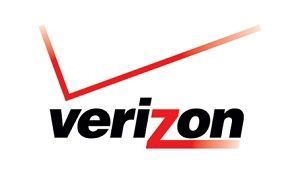Verizon FiOS Rolls Out 500-Meg Internet Tier

Verizon Communications new fiber-fed Internet tier isn’t offering Google Fiber-like speeds yet, but it’s getting closer.
The telco on Monday unleashed a FiOS Internet speed service for residential and business customers that maxes out at 500 Mbps downstream by 100 Mbps upstream that is being priced based on service bundles and other factors.
The stand-alone price for the residential version of the 500-Meg tier is $299.99 per month, according to Verizon spokesman Bill Kula.
Here’s how monthly pricing stacks up when the new offering is teamed with Verizon’s variety of FiOS TV packages:
- $310 per month when paired with Select HD, FiOS TV’s sports-free video service;
- $320 per month with FiOS TV Prime;
- $335 per month with FiOS TV Extreme; and,
- $355 per month with FiOS TV Ultimate.
The pricing on the above tiers is reduced by $5 per month when customers agree to a two-year contract.
When the 500-Meg tier is teamed with Verizon FiOS Digital Voice, the combined cost is $315 per month, Kula said.
Verizon has also set bundled triple-play pricing that includes the new speed tier:
Multichannel Newsletter
The smarter way to stay on top of the multichannel video marketplace. Sign up below.
- $330 per month with FiOS Select HD and FiOS Digital Voice;
- $340 per month with FiOS TV Prime and FiOS Digital Voice;
- $355 per month with FiOS TV Extreme and FiOS Digital Voice; and,
- $375 per month with FiOS TV Ultimate and FiOS Digital Voice.
The business services version of the 500 Meg tier with a dynamic IP address runs $380 per month, or $10 less per month with a two-year contract. The same tier with a static IP address costs $399.99 without a two-year contract.
Kula said Verizon is not charging an upgrade fee to most customers who select the new, speedier service. The exception, he said, is customers who are currently taking month-to-month plans; those customers must foot a one-time, $100 fee.
All of the FiOS Internet tiers remain uncapped and unmetered.
Verizon’s new tier isn’t currently available to all homes and businesses covered by the FiOS network. Kula declined to offer a current percentage, but did note that Verizon expects to offer the new 500-Meg service to be offered to at least 70% of its FiOS Internet customer base by the end of 2014. The FiOS footprint currently passed about 18 million homes in parts of 12 states, plus Washington, D.C.
The new tier represents a leap above the 300 Mbps down by 65 Mbps upstream service introduced by Verizon on June 18, 2012.
Verizon has not broken down how many of its 5.8 million FiOS Internet take each speed tier, but Kula noted that more than one-third are taking speeds of more than 50 Mbps down by 25 Mbps up, and that the telco expects its 50-Meg/25-Meg tier to continue to serve as Verizon’s “sweet spot.”
Verizon has tested its fiber network running up to 10 Gbps, but the company has not announced plans to launch a 1-Gig service. Google Fiber, for example, offers a symmetrical 1-Gig standalone service for $70 per month in the Kansas City area.
“We’ll continue to watch very closely the reaction from the market and make decisions based on any potential changes in the bandwidth speeds that we offer,” Kula said. Verizon settled on 500-Meg downstream because it believed it represented a “good, appropriate step for our customer base.”
Comcast is using its fiber-based Metro Ethernet platform to power a residential broadband service in the Northeastern U.S. that tops out at 305 Mbit/s down by 65 Mbps upstream. The MSO’s current top-end DOCSIS 3.0 service offers 105 Mbps down and 20 Mbps up.
The latest DOCSIS 3.0 chipset coming from Broadcom will bond up to 32 downstream channels, enough to produce speed bursts of 1.2 Gbps in North American DOCSIS networks. The emerging DOCSIS 3.1 specs are targeting speeds up to 10 Gbps down by 2 Gbps up. At The Cable Show in June, CableLabs demonstrated downstream speeds of 6 Gbps using pre-production hardware from Broadcom that uses technology that will be baked into the new D3.1 platform .
